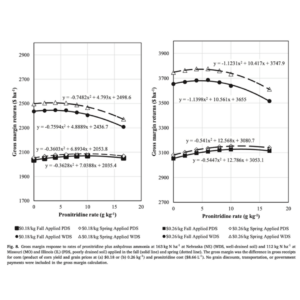Reducing nitrogen losses from agricultural fields is a key focus area of the Missouri Fertilizer Control Board (MoFCB) and the organization’s Research, Education, and Outreach (REO) committee. A recent study, which was partially funded by MoFCB and conducted by Kelly A. Nelson, PhD and Gurbir Singh, PhD with the University of Missouri Lee Greenley Jr. Memorial Research Center, along with others, looked into agronomic optimum nitrogen rate for corn; identified optimum rate of a new nitrification inhibitor (Pronitridine), and; evaluated cost-effectiveness of pronitridine rates when applied with anhydrous ammonia.
The benefits of nitrogen inhibitors to improve nitrogen use efficiency and crop yields have been communicated for many years. This study examined two specific products, nitrapyrin (trade name N-Serve by Dow AgroSciences) and pronitridine (trade name Centuro by Koch Agronomics) at 4 locations in three states for 13 site-years having well-drained and poorly drained soils. The effects of nitrapyrin (N-Serve) and pronitridine (Centuro) were also evaluated on corn with both products being used in the fall and spring.
The optimal pronitridine rate of 11.2 and 16.4 lbs ton-1 N was recommended for well-drained and poorly drained sites, respectively. The pronitridine application at an average rate of 11.6 lbs ton-1 N increased corn grain yield 4% compared to the corn grown without pronitridine. Economic analysis showed an increase in gross margin returns of $13-27 ac-1 in poorly drained soils when applied at 16.4 lbs ton-1 N with fall and spring N application.
Higher gross margins were observed in well-drained soils as well with returns $4-12 ac-1. The well-drained soils saw this return with an application of 8 lbs ton-1 N of pronitridine (Centuro) for both fall and spring application timings.
Key Findings
Overall, this study concluded the differences in agronomic optimum N rate and pronitridine (Centuro) rate predicted are emphasized by factors including soil, environment, and their interactions with the nitrogen cycle. Regarding the differences between the two nitrification inhibitors, there were no differences observed between nitrapyrin (N-Serve) and pronitridine (Centuro) with all site years combined. See Figure 8 from the article below.

These findings are the first to quantify corn yield response to pronitridine (Centuro) applications at different locations and multiple rates in the Midwest U.S. The results of this study highlight optimum rates for improved corn yield in poorly drained and well-drained soils in the Midwest U.S. In addition, the profitability of pronitridine (Centuro) use can be improved by applying an optimum rate based on nitrogen requirements and soil conditions.
This study was conducted in Missouri, Illinois, and Nebraska from 2016-2019 and promoted by the Missouri Fertilizer Control Board (MoFCB). MoFCB is directed to “pursue nutrient research, educational, and outreach programs to ensure the adoption and implementation of practices that optimize nutrient use efficiency, ensure soil fertility, and address environmental concerns with regard to fertilizer use extending the results of the fertilizer experiments that may be of practical use to the farmers and agribusinesses of this state.”
Information in this update was obtained from the journal publication on Science Direct. To read the full publication, click here.
If you have any questions, please reach out to Andrea at arice@mo-ag.com or by calling (573) 636-6130.

